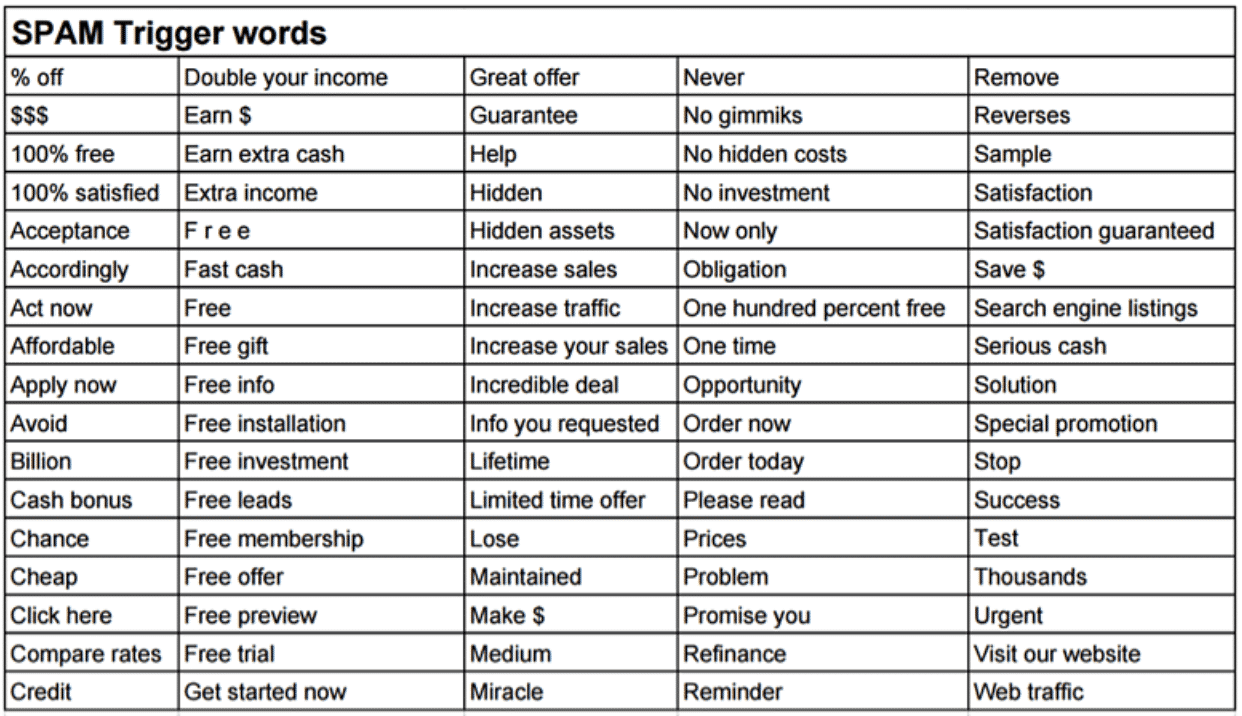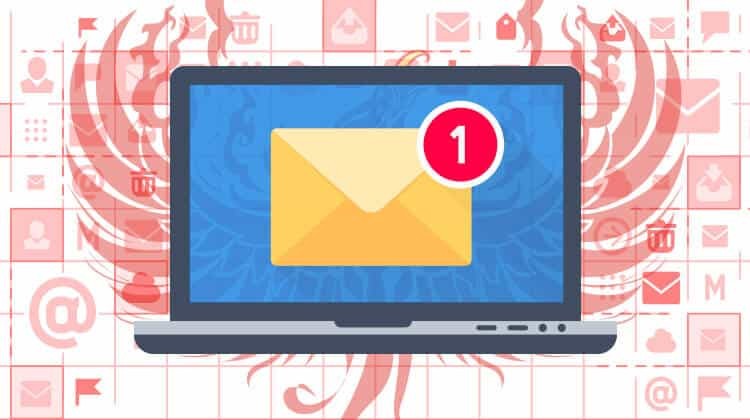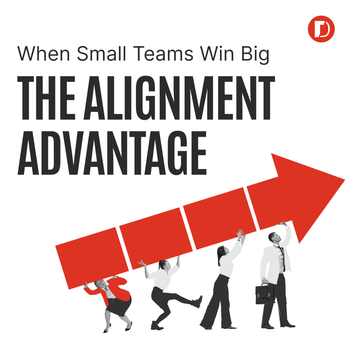How to Improve Email Deliverability and Increase ROI 5x
by Melanie Balke • December 30, 2019
Email marketing is one of the most profitable channels in the marketing world. No matter how often people claim email to be dead, it keeps rising like a phoenix from its ashes with ROI that seems more alive than any other channel out there.
However, many businesses leave money on the table by following quick-fix “1-800 make-me-money-now” strategies that turn out to be detrimental in the end.
The most common issue I see when working with ecommerce stores on their email marketing strategy is that they have managed to get themselves in the spam folder.
In the email marketing world, that is basically the equivalent of your parents sending you to your room for a time out…forever.
If instead, you are looking to make email marketing your channel, drive 5x ROI while casually sipping a latte and seeing the orders attributed to your emails shoot up, keep on reading.
How to Get Out of the SPAM Folder
As mentioned before, the spam folder should be treated like the email equivalent of Mordor. Don’t go there!
Email providers such as Gmail, Hotmail, Yahoo, etc all give your sender address a certain reputation. Once your reputation is spammy, you will land in the SPAM folder where no customer will ever get to see your email.
That’s tragic, because it means that even the customers who WANT to see your emails will likely not see them, because who looks in their SPAM folder?
This is pretty much like your crush sending you a love letter that gets lost in between the paper advertisements and thrown out without you ever knowing—TRAGIC!
Luckily, there are things you can do to avoid landing in the SPAM folder or getting yourself out after you did: Improving your email deliverability.
Email Deliverability
Email deliverability encompasses how likely your email is to land in the inbox as opposed to the SPAM folder. Depending on your email address’s reputation, your deliverability is high or low.
And your reputation, as we said before, is determined by email providers, which look at a few factors when determining whether your sender reputation is spammy or not: How often your emails are opened, clicked, unsubscribed from, bounced or even SPAM flagged.
A high open rate means that people love receiving and reading your emails. This is great news for the email provider and they consider you a trusting source. A good open rate that I like to shoot for is 20% or more. However, usually anything above 10% is considered to not be spammy according to my personal sources at Email Service Providers (ESPs) like Klaviyo and Mailchimp.
A high click-through rate is even better. Not only do people love receiving your emails, but they also engage with them.
On the other hand, if your emails are often unsubscribed from, it signals the opposite. People are receiving your emails, but don’t actually want to. This is obviously bad for your sender reputation. It’s like asking the same girl out over and over again while she’s saying no—and not in a cute way.
Having a lot of emails bounce is similarly bad. It essentially means that people are either giving you fake email addresses or you purchased email addresses from somewhere that are incorrect. This signals the ESP that something about you is fishy!
The worst case is having a lot of customers spam flag your emails. This should be pretty clear since now your customers are literally telling the ESP that you are SPAM. It’s as clear as a “No” can get.
You want to keep the unsubscribe, bounce and spam flag rate below 1% at all times. I personally like to shoot for 0.2% and lower to be in the safe zone.
Improving Email Performance
So, how do you improve performance on these metrics? There are a lot of different tricks you can use, but in my experience, here are 4 effective tips you should try first.
Tip 1) Segment Your Email Lists
The easiest and fastest way to increase your deliverability metrics is to segment your audience and send personalized and targeted emails. This, in turn, will lead to your audience opening and clicking your emails as opposed to spam flagging and unsubscribing.
Let’s assume you have an email subscriber who hasn’t opened your email in 4 months. I recommend discontinuing the regular newsletter to those customers and sending a “Are you still interested?” email instead. If that email re-engages them, great. If not, then it’s time to consider them unsubscribed and stop sending to them.
The biggest discussion point I see when working with clients that are new to the email space is that they would rather send to a really large list than a really targeted one. Sending an email announcing a big sale to 200,000 customers just seems more lucrative than to just send it to the 50,000 engaged ones.
You have to keep in mind though, that there is no difference.
If you send to 200,000 and 20,000 open your email, you’re at an open rate of 10%. If you send to 50,000 and 20,000 open, you are looking at a 40% open rate. The number of people opening your email is ultimately the same, but your deliverability rate looks a lot better in the latter scenario—signaling to ESPs to continue delivering your emails to the inbox.
Segmentation can also be used to get customers to click and engage more. If you have a customer who has only purchased sweaters from you in the past, don’t send emails about your underwear products (unless there’s some weird correlation between sweater and underwear purchasers?).
Instead, focus on advertisements for sweater products or products that go well with sweaters. This is more relevant to your customers, so in turn she/he will not only engage more with the emails but also be way more delighted by you as a brand.
The biggest faux-pas I see is when female customers get emails for male clothes or vice-versa. Sometimes they buy for a partner, but more often than not this is a marketing blunder.
Here’s a quick guide I wrote on the 5 most important email segmentation strategies. Follow the above strategy and you’ll have a solid start.
Tip 2) Introduce Yourself Properly and Warm Up the Lead
Make sure people are aware of why they are receiving your email.
After people subscribe to you, they should receive an instant automated welcome series. You can easily set this up in your ESP. This welcome series should introduce your brand, give them relevant and engaging information and encourage purchase. On top of that, it serves as a reminder that they now will be receiving emails from you, which will make it less likely for them to have the: “Why am I getting this? Let me spam flag it” moment later on.
This is especially important if you are growing your email list through giveaways. More often than not people will enter these giveaways without realizing that they just subscribed to multiple brands. Make sure you have an automated welcome series set up just for these customers, which refers to the giveaway and explains who you are and why they are receiving your emails.
Based on my experience, this customer acquisition source receives the most complaints as people don’t really recall or even understand that they signed up to receive emails without a good welcome series. In this email, you also want to make the unsubscribe or preference management buttons as prevalent as possible so people can either unsubscribe if they truly aren’t interested or make sure they get the emails that are relevant to them.
Tip 3) Don’t Be Clingy
As stated above with the giveaway welcome series, you generally want to make unsubscribing easy for your customers and changing their preference even easier.
Nothing hurts your deliverability as much as getting spam flagged so you want to make sure that once customers truly want to stop receiving your emails they can easily do so. Make your unsubscribe button prevalent and the process as easy as one-click.
As mentioned above, you can also add a preference center so that instead of unsubscribing, customers can choose which emails they want to receive. Some of your customers might only be interested in your “sale and discount emails”, others might want to hear about your interesting “recipes”.
For clothing brands, this is especially important if you are both selling to males and females. You want to ensure that people tell you whether they are interested in male or female fashion, ideally at sign-up, and if not then very soon after, so you can target your emails. Men don’t want to receive emails about skirts. Unless they’re Scottish. Then they do, I guess.
In a nutshell: Offer customers the option to tailor the emails they receive.
Tip 4) Don’t Be Weird
This should be general advice for life: Avoid spammy words and email content.
Email providers have long seen through the emails from Nigerian princes offering you $1 million dollars if you just send them all your bank info.
Unfortunately, some grandmothers haven’t yet, which is why email providers do their best to automatically filter these kinds of emails and mark them as SPAM.
They do this by looking out for:
- Spammy words: “Free extra income for you”
- All caps in emails: “FREE EXTRA INCOME FOR YOU”
- Excessive use of exclamation marks: “FREE EXTRA INCOME FOR YOU!!!!!!!”
Now that doesn’t mean you can’t use the word “free” if you are offering a promotion where that makes sense, e.g. “Buy one, get one free”. It just means to beware that this is a word that is often considered spammy, so you will want to make sure you are sending to a super targeted list and are avoiding any other spammy seeming practices.
Here is a more comprehensive list of spammy words from Yesware.

Another thing to keep in mind is the use of images in emails.
Studies have found that for emails below 500 characters, supporting images are beneficial (because sales emails are usually around this length, so images signal a more personal email). For emails over 500 characters, they don’t really have any effect.
However, emails with just images are often and easily considered spammy. If you are sending emails with a lot of images, compress them to the lowest possible size at which you don’t lose quality.
Last but not least, make sure to keep your fonts, colors and styles as coherent as possible and minimize the number of links you use.
Conclusion
That’s it, folks! These are 4 quick tips to ensure you stay out of the SPAM folder and land in the cozy land of email dreams called inbox.
Following proper deliverability best practices will ensure that your email marketing ROI stays nice and high while you lay back and relax.
Oh, and by the way, if you’d like any help putting together some dynamite email marketing campaigns, let the good folks here at Disruptive know by clicking on this link here. You won’t be disappointed!
How do you improve email deliverability and the ROI of your email campaigns? Leave your thoughts in the comments below.




